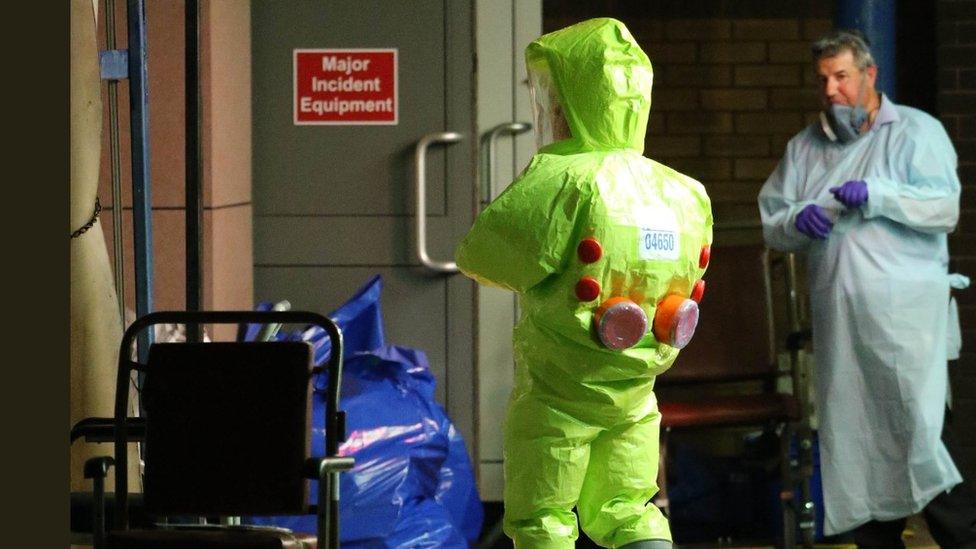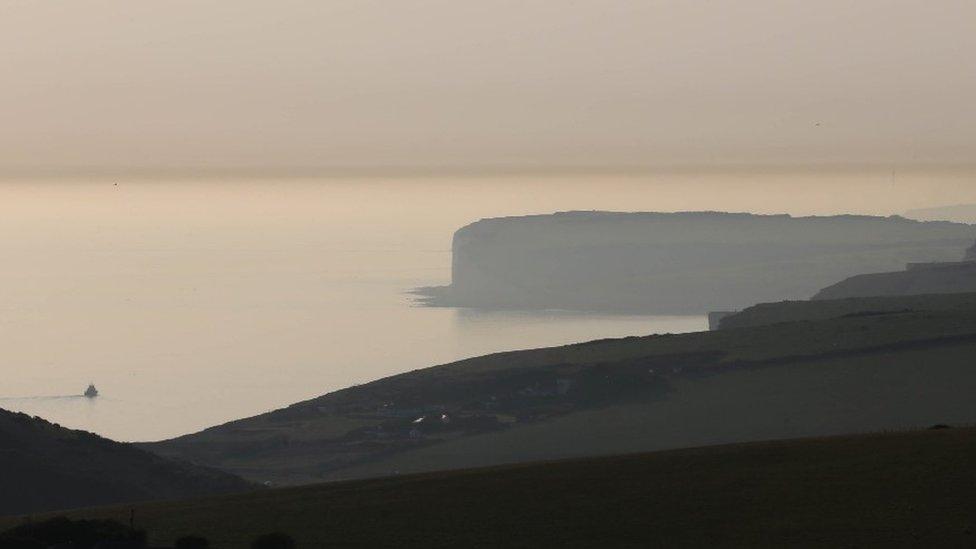Birling Gap: Firefighters to get new testing equipment
- Published

The chemical mist hit the beach during the busy bank holiday weekend
Firefighters in East Sussex are to be given new gas sampling equipment following a report into how they responded to a chemical haze.
The gas cloud, which came ashore along Birling Gap in August 2017, saw hundreds of people taken to hospital with breathing problems and sore eyes.
At the time, emergency services could not identify the gas which a report found hampered their response.
Now, firefighters will be given testing and sampling kit for future incidents.
Public Health England estimates as many as 2,500 people may have been affected by the haze when it came ashore on the busy bank holiday Sunday.
The Sussex Resilience Forum (SRF), which brings together local emergency services, stated in its incident report "the lack of capability... to identify unknown gases is an issue that must be resolved".
'The cavalry'
The Photo Ionisation Detector can identify more than 200 different compounds and store gases for further testing by experts.
The agencies belonging to the SRF are all contributing to buy the detector - technology which the fire service said crews in Kent, Surrey and Hampshire already have.

Not knowing which chemicals were involved made the medical response to the Birling Gap incident harder.
George O'Reilly, the SRF's response group chair, said the device would "allow us to gather a sample and keep that contained until the cavalry arrive with better scientific equipment".
He added: "We want to be prepared going forward."
Is it hoped the new equipment will be in place by April and emergency services have had further training, including decontamination drills involving the NHS.

Report findings
The SRF report, obtained by the BBC under a Freedom of Information request, revealed a catalogue of problems as a result of the gas cloud:
Not being able to identify the gas "caused difficulties in deciding on future care" for the NHS, and medics were given conflicting advice about decontaminating patients.
Correspondence with Public Health England suggests RAF aircraft could have been deployed to identify the gas - but were not requested in time.
Wealden District Council was not told an incident was taking place.


Stephen Lloyd said getting the equipment had been "a bit like pulling teeth"
Local MP Stephen Lloyd has been calling for emergency services to have the sampling equipment.
He said: "We never discovered what that noxious haze was for one very simple reason - none of the emergency services actually had a basic piece of kit.
"It's taken a year-and-a-half and it's been a bit like pulling teeth."
The government declined to comment.
- Published28 August 2018

- Published8 February 2018

- Published4 December 2017

- Published27 August 2017

- Published28 August 2017
